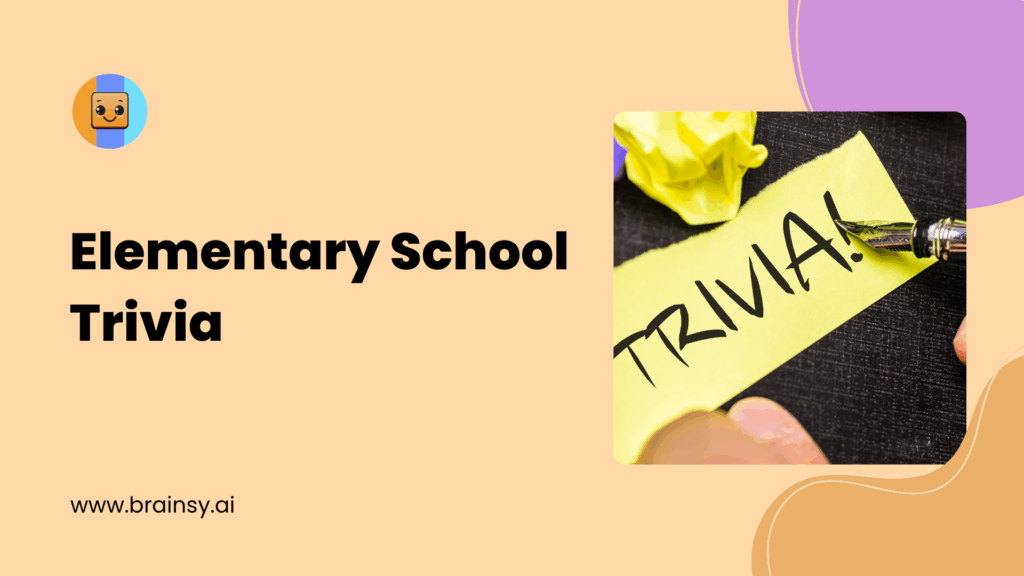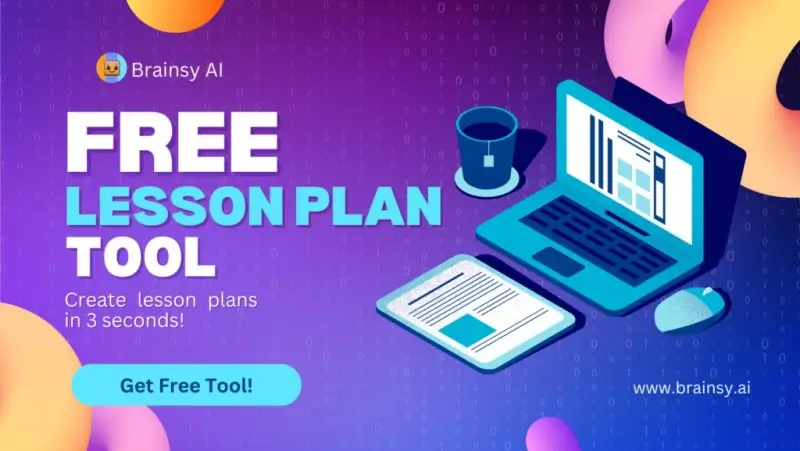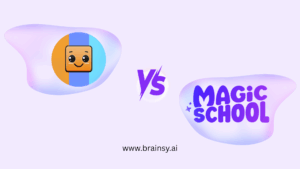Introduction
Welcome to the enchanting world of elementary school trivia, where learning meets fun, and knowledge turns into a captivating game. Who said education has to be all about textbooks and lectures? Not us! We believe in the power of trivia to spice up the learning experience for our elementary school students and middle school students. Picture this: smiles on faces, hands shooting up enthusiastically, and a classroom buzzing with excitement as students engage with fun trivia questions.
Trivia isn’t just a game; it’s an educational powerhouse. It tickles curiosity, encourages friendly competition, and helps students retain information in the most engaging way possible. Think of it as a treasure hunt, but instead of gold coins, our young learners uncover nuggets of wisdom and fun facts that stick with them for life. When combined with AI tools for Students, educational trivia transforms a regular classroom into a dynamic learning environment where knowledge is celebrated and curiosity thrives.
In this article, we’ll dive deep into this whimsical world of trivia for kids. We’ll explore how trivia can revolutionize the learning experience, the importance of trivia in education, and of course, we’ll arm you with a collection of delightful trivia questions that will have your students begging for more!
The Importance of Trivia in Learning
Why trivia, you ask? Trivia has a magical way of making learning irresistible. It’s like adding a sprinkle of fun to a dish of knowledge, making even the most mundane facts delightful. Imagine students eagerly discussing the capital of France or debating the fastest land animal. Random trivia ignites a spark of curiosity that textbooks alone might not kindle.
Not only does trivia engage students, but it also boosts their cognitive abilities. It enhances memory recall, sharpens critical thinking, and improves problem-solving skills. When students participate in a quiz for kids or answer trivia questions, they are practicing retrieval, which is a proven way to strengthen memory and understanding.
Moreover, trivia fosters a sense of community and teamwork. When students participate in trivia games, they learn to work together, share ideas, and celebrate collective victories. It’s an inclusive activity that breaks the ice and encourages even the shyest of students to participate, making it an invaluable tool in the diverse classroom setting.
Engaging Trivia Questions for Elementary School Students
Now, let’s dive into the heart of the article: the trivia questions! These funny trivia questions are designed to be entertaining yet educational, covering a wide range of topics that cater to the curious minds of elementary school students.
Sample Questions:
- Science: What planet is known as the Red Planet?
- Geography: What is the largest ocean on Earth?
- History: Who was the first President of the United States?
- Math: What is the sum of 8 and 5?
- Literature: Who wrote “Charlotte’s Web”?
These easy trivia questions are just the tip of the iceberg. The beauty of trivia is that it can be tailored to fit any subject or theme. Whether you’re focusing on a particular topic in science or exploring the wonders of world geography, trivia can adapt and deliver.
The key is to keep the questions diverse and challenging enough to maintain interest, but not so difficult that they become discouraging. Remember, the goal is to spark curiosity and encourage learning, not to stump the students!
Categories of Elementary School Trivia Questions
To make the most of trivia, it’s helpful to organize questions into categories. This structure not only makes the game more organized but also allows students to focus on specific areas of interest or curriculum.
Popular Categories
- Science: Explore the mysteries of space, the wonders of the human body, and the marvels of nature.
- Geography: Travel around the world without leaving the classroom, discovering continents, countries, and capitals with geography trivia questions.
- History: Dive into the past with questions about famous figures, pivotal events, and ancient civilizations.
- Mathematics: Challenge students with math trivia questions that make numbers, shapes, and equations fun and interactive.
- Literature: Introduce students to famous authors, beloved books, and classic characters through engaging literature trivia questions.
Grouping questions into these categories can help teachers align trivia with their lesson plans and educational goals. It also allows students to see connections between different subjects, fostering a more holistic understanding of the world.
Creative Ways to Use Trivia in the Classroom
Trivia is versatile and can be integrated into the classroom in countless creative ways. The traditional question-and-answer format is just one of many possibilities. Let’s explore a few innovative methods to make trivia a regular part of your educational toolkit.
Game Formats:
- Quiz Bowl: Divide the class into teams for a friendly competition. This format encourages teamwork and lively debate.
- Jeopardy Style: Create a board with categories and point values. Students choose questions based on their confidence level.
- Trivia Relay: Set up stations with different trivia categories. Students move from station to station, answering questions as a group.
These formats can be tailored to suit any classroom dynamic, ensuring that all students are engaged and learning. Incorporating multimedia elements like videos or images can also enhance the trivia experience, making it more interactive and visually appealing.
Additionally, trivia can serve as excellent classroom icebreakers or transition activities, helping to refocus students’ attention between lessons or at the start of the day.
Top 20 Fun Elementary School Trivia Questions
We’ve curated a list of fun and stimulating trivia questions that are perfect for elementary school students. Use these questions to create a trivia game that will have your students on the edge of their seats!
- What is the capital of Canada?
- Which planet is known for its beautiful rings?
- How many legs does a spider have?
- Who wrote the play “Romeo and Juliet”?
- What is the largest mammal in the world?
- What is the process by which plants make food using sunlight?
- How many continents are there on Earth?
- What is the smallest prime number?
- In which ocean is the Bermuda Triangle located?
- What is the hardest natural substance on Earth?
- What is the main ingredient in guacamole?
- Who is the Greek god of the sea?
- What is the boiling point of water in Celsius?
- What is the longest river in the world?
- How many colors are there in a rainbow?
- What is the name of the fairy in Peter Pan?
- What is the chemical symbol for gold?
- Who painted the Mona Lisa?
- What is the name of the ship that sank in 1912 and was dubbed “unsinkable”?
- What is the largest desert in the world?
These questions cover a wide array of subjects and are designed to pique the interests of students while reinforcing their knowledge across different domains. From animal trivia questions to food trivia questions, this list offers a diverse range of topics to engage young minds.
How to Create Your Own Trivia Questions
Creating your own trivia questions can be a rewarding and engaging process. It allows you to tailor questions to the specific needs and interests of your students, ensuring that the trivia game is relevant and educational.
Steps to Crafting Trivia Questions:
- Identify the Topic: Choose a subject or theme that aligns with your curriculum or a particular lesson.
- Research Facts: Look for interesting and lesser-known facts that will surprise and educate students.
- Formulate Questions: Write questions that are clear, concise, and appropriate for the age group.
- Test for Difficulty: Ensure that questions are neither too easy nor too hard, aiming for a balanced level of challenge.
- Get Creative: Use riddles, visual aids, or multiple-choice formats to make questions more engaging.
By following these steps, you can create a collection of trivia questions that are not only fun but also a powerful educational tool. Consider incorporating pop culture trivia or global education questions to broaden students’ horizons and keep them engaged with current events and world knowledge.
Related Read: Trivia questions for middle school students.
Benefits of Trivia Games for Elementary School Students
Playing trivia games offers numerous benefits for elementary school students. Beyond the obvious enjoyment, trivia promotes a variety of skills that are crucial for academic and personal development.
Key Benefits:
- Enhances Memory: Regular exposure to trivia questions helps improve memory retention and recall.
- Encourages Critical Thinking: Trivia challenges students to think quickly and make connections between different pieces of information.
- Builds Confidence: Successfully answering trivia questions boosts self-esteem and encourages participation.
- Promotes Teamwork: Group trivia games foster collaboration and communication among students.
- Reduces Stress: The playful nature of trivia provides a break from routine, reducing stress and enhancing mood.
With these benefits in mind, it’s clear that trivia is more than just a fun activity; it’s a valuable educational strategy that supports a well-rounded learning experience. Family trivia nights can even extend these benefits beyond the classroom, creating opportunities for fun family trivia and bonding at home.
Resources for Finding More Trivia Questions
If you’re looking to expand your repertoire of trivia questions beyond this article, there are plenty of resources available. The internet is a treasure trove of trivia, with countless websites and books dedicated to the art of question crafting.
Suggested Resources:
- Websites: Sites like Sporcle, Trivia Plaza, and Fun Trivia offer a wide range of trivia questions across various subjects.
- Books: Trivia books specifically for kids can be a great resource. Titles such as “The Big Book of Kids’ Trivia” offer a plethora of questions tailored for young learners.
- Educational Apps: Apps like Kahoot! and Quizlet provide interactive trivia experiences that can be customized for classroom use or as a school quiz.
These resources can help you keep your trivia games fresh and exciting, ensuring that your students remain engaged and enthusiastic about learning.
Conclusion
As we’ve explored, elementary school trivia is a fantastic way to make learning enjoyable and effective. It transforms the classroom into a lively arena where curiosity thrives, and knowledge is celebrated. By incorporating trivia into your teaching, you’re not just educating; you’re inspiring a lifelong love for learning.
So why wait? Dive into the world of trivia and watch as your students light up with excitement and enthusiasm. And remember, the best learning happens when students are having fun. Let’s make education an adventure!
Are you ready to transform your classroom with the magic of trivia? Start today by incorporating some of the questions and ideas from this article into your teaching routine. Share your experiences with us, and let’s create a community of educators dedicated to making learning a blast. Happy trivia-ing!






